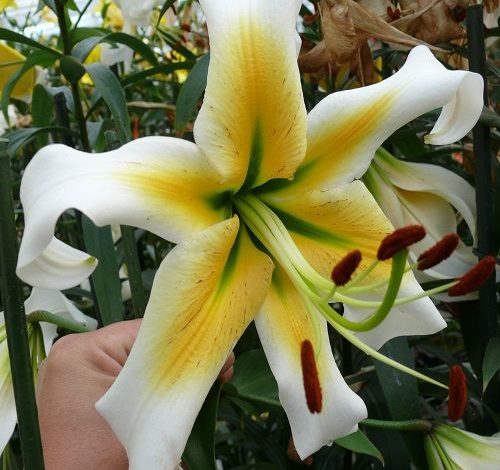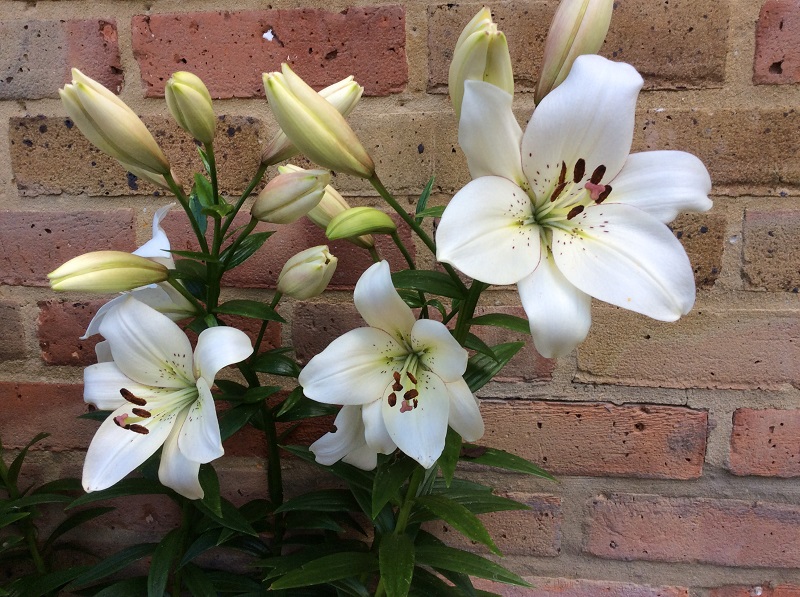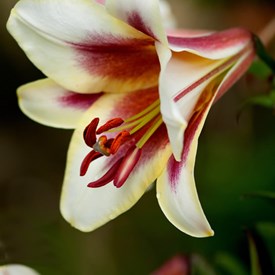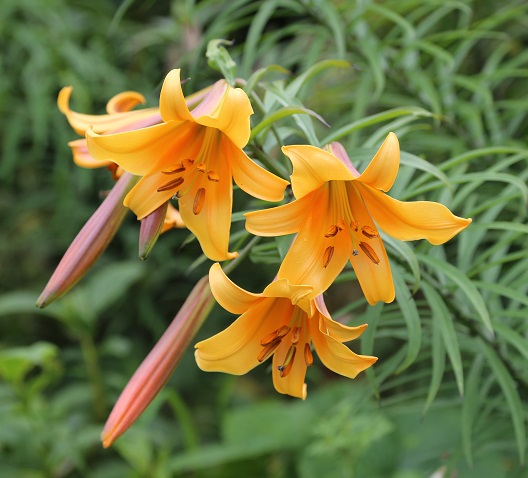How to plant lilies

Cultivation
Despite their exotic appearance, lilies in pots are very easy to maintain. All you need to do is make sure that the compost is kept moist throughout the growing season, and bolster flowering by applying a high potash tomato fertiliser as a liquid feed, but take care not to splash it on leaves or stems. After flowering, you must keep the pots watered for a few more weeks until the leaves begin to die down. This allows nutrients to be taken back into the bulbs. Store the pots somewhere cool and dry for the winter.
Lilies indoors
Lilies happily flourish in a cool conservatory or greenhouse, making a fragrant display throughout the summer. The regale lily, the strongly scented “Casablanca” and L. Speciosum are all recommended for growing indoors. Make sure the temperature in the conservatory or greenhouse remains above freezing at night. Keep the compost moist and feed the plants with tomato fertiliser every two weeks. Repot in the autumn to encourage blooms the following year.
Planting in the garden
In general, lilies like to be in the sun with their roots in the shade, so plant among shrubs or perennials. Be careful not to overcrowd them. To make sure your lilies remain healthy, plant them in open, free draining compost. Mix in a little fine grit or sand and, if you are using loam based compost, add some well-rotted organic matter, such as garden compost. The Oriental lilies need acid soil, so use ericaceous compost for these.
Planting lilies in pots
- Fill the bottom of a large pot with plenty of broken crocks, to provide good drainage.
- Place the bulbs 2.5cm to 5 cm apart on a layer of compost, with the pointed tip uppermost.
- Spread out the roots, cover the bulbs with compost. Water well and keep the compost moist.
Click here for our container planting guide

Lilium Garden Party 
Lilium Eyeliner 
Lilium Salmon Flavour
Flowering
Once the lilies have flowered, remove the faded blooms, but continue to feed and water the plants for several more weeks to encourage strong bulbs for the following season. The lily beetle can do a lot of damage. Both the scarlet adult beetles and the dark brown slug like larvae strip the plants of their leaves and occasionally the flowers, seeds and stems.
Lily beetles are active for a long period of time, from April to October, and can be difficult to control. You can either pick the beetles and grubs off by hand, or use a recommended chemical control.
Adult beetle Lily beetle larvae
Growing tips
For lilies to stay healthy, they must have good drainage. Plant them in pots with drainage holes, plenty of crocks and gritty compost. Lilies can need staking. Insert a cane into the compost when you plant the bulbs, to prevent spearing them by mistake later on. Most lilies prefer neutral or slightly acidic compost. Although Oriental lilies hate lime, trumpets and Asiatics will tolerate small quantities.
Over wintering
When you are planting lilies it is very important to prepare the soil to ensure that they do not become waterlogged in the winter. This is best done by adding a hand full of grit to the hole before planting the lilies. Once the bulbs are in, all you need to do is mulch the border with well-rotted organic matter or bark to protect from frosts. Lilies will naturalise very well from year to year and as such can be left undisturbed for a number of years. During the spring as the new shoots emerge, ensure these are covered with an insulating material such as fleece or newspaper if a new frost is expected.





